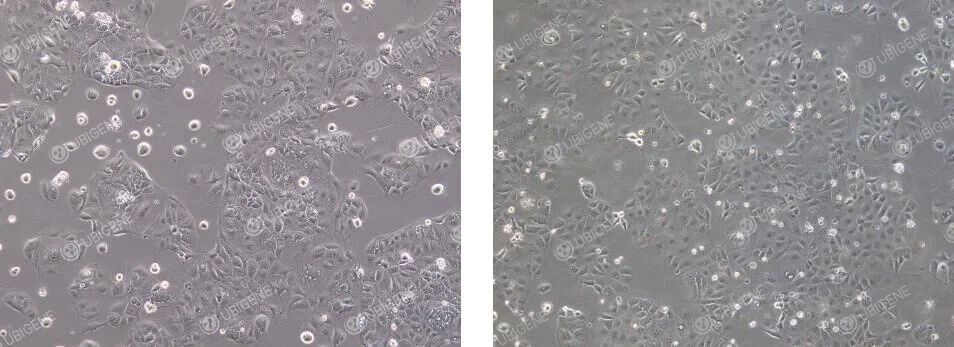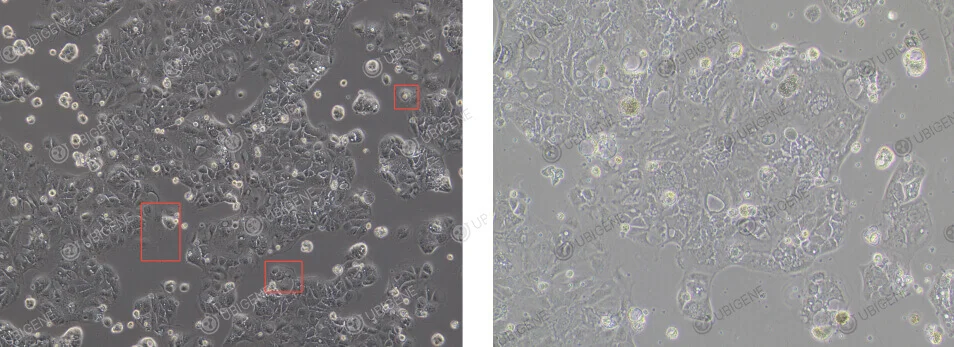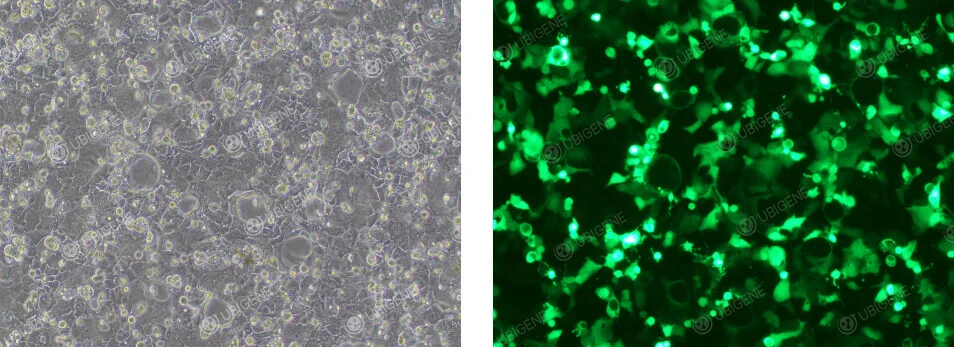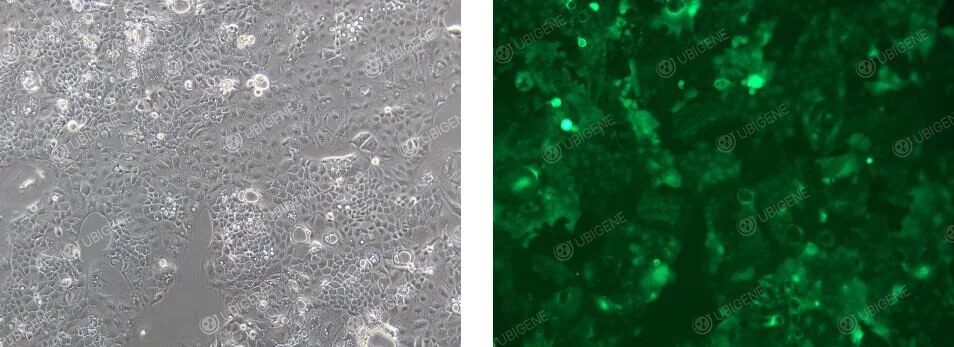Expert Insights | Tips For Caco-2 Cell Culture & Gene Editing


Expert Insights | Tips For Caco-2 Cell Culture & Gene Editing

Caco-2 cells are a human colorectal adenocarcinoma cell line. They are widely used as a model for studying intestinal absorption, drug transport, and toxicological assessment because they differentiate into epithelial cells with brush borders and tight junctions in vitro, mimicking many functions of human small intestinal epithelial cells. With the advancement of gene-editing technologies, CRISPR/Cas9-modified Caco-2 cells have further propelled the study of specific gene functions and regulatory mechanisms in these fields. Today, we would like to share some tips on culturing Caco-2 cells and gene editing of Caco-2 cells with you all.
Contents
Basic Information
| Cell Line | Caco-2 (Human Colorectal Adenocarcinoma Cells) |
| Morphology | Epithelial-like, adherent cells with some large cells containing vacuoles |
|
Cell Culture Conditions |
Medium: 77% MEM + 20% FBS + 1% Glutamax + 1% Sodium Pyruvate + 1% NEAA |
| Gas Phase: Air 95%; Carbon Dioxide 5% | |
| Temperature: 37℃ | |
| Medium Change Frequency | Every 2-3 days |
| Passage Ratio | 1:2-1:4 |

Figure 1: Normal Caco-2 cells
Cells exhibit tight junctions between each other and typically grow in an island-like pattern. The boundaries of cell clusters are smooth, and large vacuoles are often present within these clusters. These characteristics are intrinsic to the cells and are considered normal phenomena.

Figure 2: Poor cell growth
Abnormal cell morphology may occur with cellular aging, where cells can become irregular and lose their typical cobblestone appearance.
Caco-2 Cell Culture
Cell Thawing
1) Preparation: Place 7 mL of complete culture medium in a centrifuge tube and keep it on standby..
2) Thawing: Remove the cells from dry ice, hold the cap with forceps, and place it in a 37°C water bath, shaking quickly (Note: Water should not cover the cap). Allow the cells to thaw completely within about 1 minute, until the ice melts to the size of mung beans, then stop the water bath..
3) Centrifugation:Transfer the thawed cell suspension to a centrifuge tube and centrifuge at 1100 rpm for 4 minutes, discard the supernatant;
4) Resuspension and Seeding: Resuspend the cells in complete culture medium and seed them into a culture dish/flask of appropriate size.;
5) Culturing: Place the culture dish/flask in a 37°C incubator for culturing. Observe the cell condition and adhesion status after 24 hours..
Cell Passaging (Using a T25 Flask as an Example):
1) When the cell confluence reaches 80%, passaging can be performed. In the laminar flow hood, discard the culture medium in the flask and wash the cells 1-2 times with 5 mL of PBS.;
2) Add 1 mL of trypsin, gently shake the flask to ensure the trypsin completely covers the cells, and then place the flask in the incubator for 5-10 minutes. When most cells appear rounded and bright under the microscope, and a majority of cells detach from the flask upon gentle shaking, immediately terminate the digestion;
3) Add 2 mL of complete culture medium (twice the volume of trypsin) to terminate the digestion, then transfer the cell suspension to a 15 mL centrifuge tube;
4) Centrifuge at 1100 rpm at room temperature for 4 mins. After centrifugation, discard the supernatant and resuspend the cells in complete culture medium;
5) Passage the cells at a ratio of 1:2 to 1:4. Observe the cell condition the day after passaging.
Cell Cryopreservation
1) Cell Collection: Collect the digested cells into a centrifuge tube following the cell passaging procedure;
2) Centrifuge: Centrifuge at 1100 rpm for 4 mins, then discard the supernatant;
3) Resuspension and Freezing: Resuspend the cells in cryopreservation medium. Aliquot the cell suspension into cryovials at a density of 1×10^6 cells/mL. Label the vials with the cell name, passage number, date, and other relevant information;
4) Cooling and Storage: Place the cryovials in a controlled-rate freezing container and store them overnight in a -80°C freezer. Afterward, transfer the vials to a liquid nitrogen tank for long-term storage.
Caco-2 Cell Culture Tips
1. Caco-2 cells tend to adhere slowly after thawing or passaging, with many cells floating and some debris present. They will eventually adhere in an island-like formation and grow. It is recommended not to change the medium within the first 48 hours.
2. These cells are prone to aggregation. After digestion, gently pipette the cells to ensure they are well-dispersed without causing damage.
3. Caco-2 cells exhibit heterogeneous morphology, with some large cells containing vacuoles and black granules within the cytoplasm. The secretion of a small amount of black granules is normal.
4. Carefully control digestion time to ensure cells are dissociated into single cells. Typical digestion time is 5-10 minutes.
5. Maintain an appropriate seeding density. A recommended passaging ratio is 1:2 to 1:4. Allow cells to adhere for 48 hours in the incubator before observation, which aids attachment. Passage cells when they reach about 80% confluence to maintain their health.
6. Use high-quality fetal bovine serum (FBS) for culturing Caco-2 cells.
How to Improve Poor Cell Condition :
1. Medium and Serum: Ensure the use of the correct base culture medium and high-quality fetal bovine serum (FBS). The serum concentration significantly affects the adhesion of Caco-2 cells. When the serum concentration falls below 20%, the adhesion time of the cells is prolonged, and they may even fail to adhere. Therefore, it is recommended to ensure that the serum concentration is not less than 20%.
2. Medium Change Frequency: Given the slow growth and adhesion of Caco-2 cells, it is advisable to change the medium every 2 to 3 days to maintain a stable culture environment.
3. Cell Culture Environment: Confirm that the incubator temperature, humidity, and gas phase conditions are normal.
4. Avoid using expired or long-stored culture medium. Freshly prepared medium should be used within two weeks.
5. Cell Passage Procedures: During cell passaging, pay attention to the digestion time and trypsin concentration to avoid cell damage caused by either too long or too short digestion times.
How to Adjust for Cellular Senescence:
1. Confirm Culture Conditions and Environment: Ensure that the culture conditions and environment are correct
2. Avoid Over-Digestion with Trypsin: Use appropriate trypsin concentration and digestion time, and avoid vigorous pipetting to prevent cell damage.
3. Increase serum concentration/select high-quality fetal bovine serum (FBS): Higher serum concentrations and high-quality FBS can support cell health..
4. Adjust cell density: Overly high cell density can lead to nutrient depletion and accumulation of metabolic waste, accelerating cellular senescence. Maintain cell density within an optimal range.
5. Add growth factors: Growth factors can promote cell proliferation and differentiation, helping to improve the state of cellular senescence.
6. Switch to Lower-Passage Cells: Use cells with lower passage numbers to ensure they are less likely to have undergone senescence.
7. Screening for Clones with Growth Advantage:Select single clones from the senescent cell population through methods like single-cell cloning. These clones, which have a growth advantage, can then be cultured for purification.
Caco-2 Gene Editing Tips
Precautions for Caco-2 Cell Transfection:
1. Ensure the cells are in good condition and in the logarithmic growth phase, when cell activity is high and division is vigorous, which is conducive to improving transfection efficiency. The cell density should generally be between 70-80%.
2. Pay attention to the cell digestion time to avoid over-digestion, which can harm the cell.
3. During the experiment, the cells should be pipetted into single cells to avoid cell aggregation.
4. The viability of the cells should be ≥80% when conducting experiments.
5. When using electroporation, control the amount of cells being electroporated and seed them into an appropriate culture plate afterward;
6. When using electroporation, ensure that the cell adhesion rate after electroporation is ≥70%;
7. When performing transfection with electroporation, it is important to control the experimental time, as the entire electroporation process should not be too long.

Figure 3: Post-electroporation Caco-2 Cells
8. When using lentivirus for experiments, control the cell confluence to be between 30-40% before infection; it should not be too high.
9. Before conducting formal experiments with viral methods, a preliminary experiment can be performed to find the most suitable MOI (Multiplicity of Infection); add the transfection enhancer Polybrene before infection.
10. Transfection reagents should be thoroughly mixed before use to ensure their uniformity.

Figure 4: Post-infection Caco-2 Cells
Caco-2 Single Clone Plating Experiment Precautions:
1. Ensure that the cells are in normal condition with few senescent cells before plating clones. It is recommended to control the cell confluence at around 70%.
2. The viability of the cells should be ≥85% when plating clones.
3. Conduct a preliminary experiment to find the appropriate plating density gradient to avoid too low a proportion of single clones.
4. When seeding cells onto a 96-well plate, ensure that the cell distribution is even.
5. After diluting and counting the cells, the optimal result should fall between 1*10^6-2*10^6.
Hot Caco-2 Cell KO Stock
As low as $1980, preparation time down to 1-week
| Catalog# | Gene | Cell line |
| YKO-H312 | SLC39A8 | Caco-2 |
| YKO-H342 | PPIF | Caco-2 |
| YKO-H1060 | TAF15 | Caco-2 |
Explore more Caco-2 related products, please feel free to contact us!


